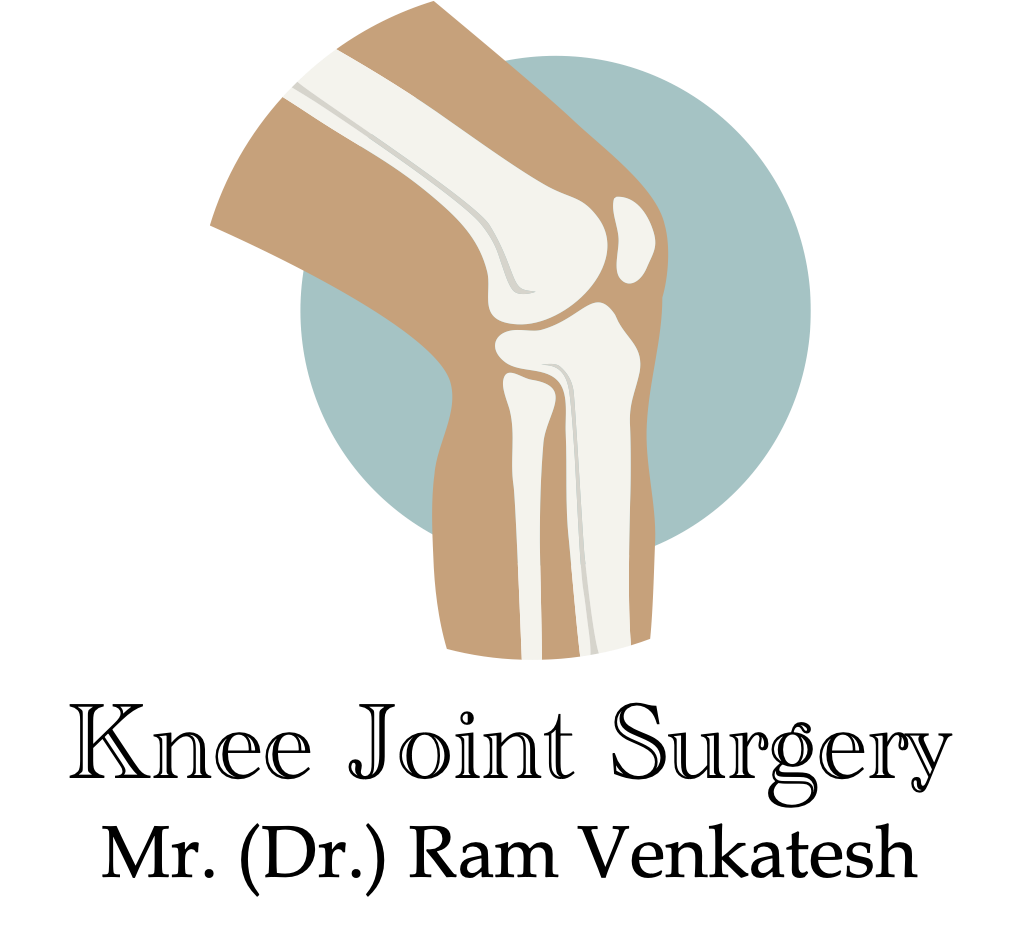Meniscectomy
Subtotal or Complete meniscectomy extending to the rim of the meniscus should be avoided. The default treatment for a longitudinal traumatic tear should be meniscus repair. Partial meniscectomy is still one of the commonest operations performed in knee surgery.
We shall go through the treatment of different types of tears. Peripheral longitudinal tears, ramp lesions and root tears require repair and are discussed under meniscus repair. Examination under anaesthesia is an important part of each arthroscopy. The patient set up is also critical to obtain good visualisation of the meniscus right up to the rim. the leg holder set up is as shown with the hip flexed. If a side support is used then avoiding hip internal rotation and adjusting table height are important. The side support can restrict placing the knee in figure of 4 position.
Portal placement is important for all arthroscopy but is especially so for dealing with posterior horn tears. Arthroscopic shavers are useful for treating degenerative tears. Two good portals (represented by the two dots) are enough for most arthroscopic meniscus surgery see image for portal position.
Flap Tear
Flap tears can give intermittent mechanical symptoms and sometimes requires careful probing to identify tear. The simplest way to treat them is to excise them at the axilla using a scissor punch. Attempts at using a standard arthroscopic punch can be frustrating as the flap is often thickened and folds away under the rest of the meniscus. i have demonstrated the technique of treatment of these tears using two videos.
Posterior Horn Tear
To obtain good visualisation of the posterior horn of the medial meniscus is often a challenge for an inexperienced surgeon. Patient set up with the table height reasonably low is important. The hip should not be internally rotated and knee flexion angle has to be adjusted based on individual patient anatomy. The following video shows the visualisation and precise trimming of a posterior horn degenerate tear. It is quite common to identify a horizontal cleavage of the posterior horn with associated meniscus cyst.
Radial Tear
These tears can follow acute trauma or could be degenerate. A radial tear extending to the peripheral rim can de-function the whole meniscus. These tears are often at the body of the lateral meniscus but can also be present close to the posterior root following an acute knee injury. The following images show how a radial tear is treated. A large radial tear requires meniscus repair even if chronic as is shown in this young knee.
Horizontal Cleavage Tear
These are often degenerate tears with co-existing articular cartilage damage. They are often associated with a meniscus cyst as shown here and in this MRI scan. The following pictures demonstrate treatment of a horizontal cleavage tear. The inferior leaf is often trimmed and the cyst is decompressed by widening the opening between the two leaves of the meniscus.
Bucket Handle Tear
Peripheral buchet handle tears require meniscus repair A bucket handle tear involving the inner half of the meniscus requires meniscectomy and can present as a locked knee. The technique of resection follows this sequence
- Reduce the displaced meniscus
- Trim most of the posterior attachment
- Swap the camera to the portal on the same side of meniscus tear
- Trim the anterior attachment of meniscus tear fully
- Make sure the portals are wide enough and the meniscus fragment is then removed
The following videos highlight this technique.
Meniscus Implant
Should a segment of meniscus be deficient and cause symptoms then the meniscus segment could be replaced with a scaffold. the prerequisites to using a meniscus scaffold are
- Intact horn attachments
- Presence of a rim!
- Meniscus defect of no more than 4-5 cms
- Relatively normal articular cartilage
- Normal knee alignment!
Two types of scaffolds are available with promising medium term outcomes. Actifit is a polyurethane scaffold and CMI is a porcine collagen scaffold. images of meniscus scaffold
